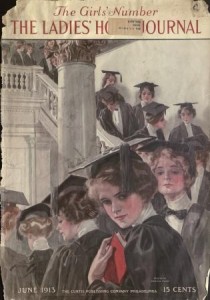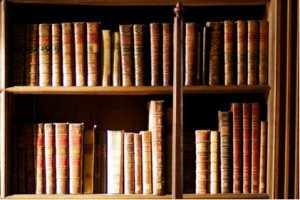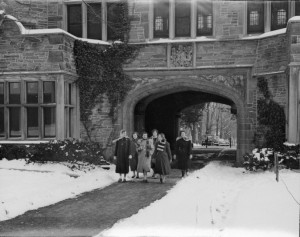“If our sons constitute half the nation, our daughters compose the other half; if knowledge in polity, law, physic, or divinity, be necessary in the former; it is equally so, in some degree, in the latter. …surely no one will deny them the right of comprehending what are forms of government, what is right and wrong between man and man, how to preserve health or restore it, and which is the way to Heaven?”
–Sarah Howard, Thoughts on Female Education: With Advice to Young Ladies, 1783. You can read the full text on an iPad provided as part of the exhibition, Taking Her Place.
We are thrilled for the upcoming opening of Taking Her Place, the first exhibition of The Albert M. Greenfield Digital Center for the History of Women’s Education. The exhibition officially opens this coming Monday with a talk by renowned historian and biographer of M. Carey Thomas, Professor Helen Lefkowitz Horowitz, Professor Emerita at Smith College and a member of our Advisory Board. Her talk, entitled “Reading, Writing, Arithmetic … and Power: Education as Entry to the World” will take place in Carpenter Library B21 at 5:30pm. All are welcome to attend the talk, which will be followed by a reception in the Rare Book Room Gallery.
The exhibition will be on display in the Rare Book Room Gallery of Canaday Library, Bryn Mawr College, from January 28th until June 2, 2013. Through the collections of Bryn Mawr College, Taking Her Place illuminates a narrative of women expanding their roles beyond the domestic sphere by claiming their rightful place as educated members of their society, beginning with the roots of the movement in the eighteenth century and continuing into and beyond the twentieth century. More information about the content of the exhibition and its digital components is available in our previous post.
A second talk will take place on April 18th, given by Professor Elaine Showalter, Bryn Mawr College class of 1962, Avalon Foundational Professor Emerita at Princeton University. Professor Showalter is regarded as a founder of feminist literary criticism, and her impact on the field of women’s studies has been tremendous. Her talk will take place on Thursday, April 18th, 2013, at 5:30 pm in Carpenter B21.
Also look out for the special book shelf created by Olivia Castello and Arleen Zimmerle outside the exhibition space. This book shelf contains texts related to the themes in the exhibition. If you have any suggestions for texts that should be added, email us at greenfieldhwe@brynmawr.edu.
Watch this space for further announcements regarding the talk by Professor Showalter and special tours with the curators, Jennifer Redmond and Evan McGonagill, Director and Research Assistant of The Albert M. Greenfield Digital Center for the History of Women’s Education. We encourage all to attend the exhibition, and we welcome your feedback!















